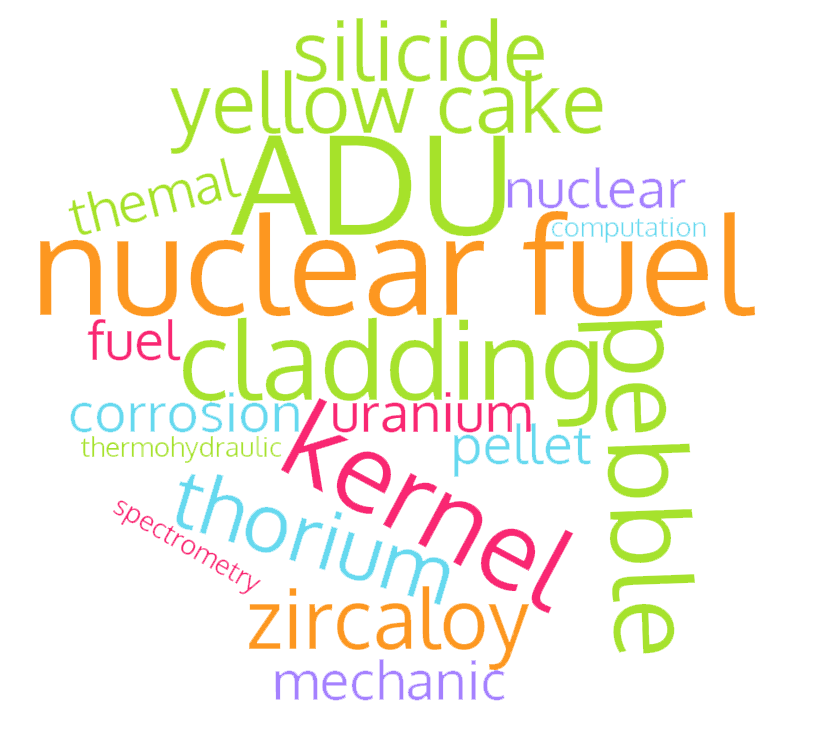PENGARUH DENSITAS URANIUM DALAM PELAT ELEMEN BAKAR U-7Mo/Al-Si MENGGUNAKAN KELONGSONG AlMgSi1 TERHADAP HASIL PROSES PENGEROLAN
DOI: http://dx.doi.org/10.17146/urania.2013.19.3.1793
Sari
ABSTRAK
PENGARUH DENSITAS URANIUM DALAM PELAT ELEMEN BAKAR U-7Mo/Al-Si MENGGUNAKAN KELONGSONG AlMgSi1 TERHADAP HASIL PROSES PENGEROLAN. Pembuatan pelat elemen bakar/PEB U-7Mo/Al-Si bertujuan untuk mempelajari pengaruh densitas uranium dalam bahan bakar U-7Mo/Al-Si terhadap hasil proses pengerolan. Kegiatan dimulai dari membuat komposit dengan cara memasukkan inti elemen bakar/IEB U-7Mo/Al-Si kedalam lubang frame dan kedua permukaannya ditutup dengan cover, kemudian pada keempat sisi sambungannya dilas TIG pada beberapa titik agar frame dan cover tidak bergeser selama pengerolan. Satu unit paket rol berbahan AlMgSi1 berisi 8 buah komposit, yang terdiri dari 3 buah komposit berisi IEB U-7Mo/Al-Si dengan densitas 3,6 gU/cm3, 1 buah komposit berisi IEB U-7Mo/Al-Si dengan densitas 6 gU/cm3, 2 buah komposit berisi IEB U-7Mo/Al-Si dengan densitas 7 gU/cm3, 1 buah komposit berisi IEB U-7Mo/Al-Si dengan densitas 8 gU/cm3, dan 1 buah komposit berisi IEB U-7Mo/Al-Si dengan densitas 9 gU/cm3, akan dibuat PEB dalam ukuran mini. Seluruh komposit tersebut dianil pada suhu ±4800C selama 30 menit, lalu dirol panas dalam empat tahap, dan dirol dingin dalam tiga-empat tahap untuk mendapatkan ketebalan akhir ± 1,40 mm. Pengujian terhadap PEB hasil pengerolan diantaranya meliputi cacat permukaan, ketebalan PEB, dan radiografi sinar-x. Hasil pengujian menunjukkan bahwa pengerolan PEB dengan densitas ≤ 8 gU/cm3 menghasilkan pelat dengan ketebalan ± 1,4 mm, sedangkan PEB dengan densitas 9 gU/cm3 menghasilkan pelat cacat. Dari hasil penelitian diperoleh bahwa material AlMgSi1 dapat digunakan sebagai material kelongsong untuk PEB dengan densitas ≤ 8 gU/cm3.
Kata kunci: U-7Mo/Al-Si, AlMgSi1, densitas uranium, pelat elemen bakar, pengerolan.
ABSTRACT
EFFECT OF URANIUM DENSITY OF U-7Mo/Al-Si FUEL USING AlMgSi1 CLADDING ON ROLLING PROCESS RESULT. The manufacture of U-7Mo/Al-Si fuel element plate is aimed to study the effect of uranium density of U-7Mo/Al-Si fuel on the rolling process result. The manufacture begins with the making of composite by inserting U-7Mo/Al-Si fuel element cores into holes of frame, placing cover on the second surface, and subsequently welding the four-side joints by TIG at some points so that the frame and the cover do not shift during rolling. One unit of AlMgSi1 rolling package contains 8 pieces of composite, i.e. 3 pieces of composite containing fuel element cores with a density of 3.6 gU/cm3, 1 piece of composite with a density of 6 gU/cm3, 2 pieces of composite with a density of 7 gU/cm3, 1 piece of composite with a density of 8 gU/cm3, and 1 piece of composite with a density of 9 gU/cm3. Each piece of the composite is made into a miniature scale plate. The entire composite is annealed at a temperature of 480oC for 30 minutes, hot rolled for four times, and cold rolled for three-four times in order to get the final thickness of ± 1.40 mm. Tests on the rolled fuel element plates include surface defects, thickness, and x-ray radiography. The test results indicate that the rolling of fuel element plates with a density of ≤ 8 gU/cm3 produces a thickness of ± 1.4 mm, while the fuel element plates with a density of 9 gU/cm3 produce defective plates. The results of this research indicate that the AlMgSi1 can be used as cladding material for fuel element plate with a density of ≤ 8 gU/cm3.
Keywords: U-7Mo/Al-Si, AlMgSi1, uranium density, fuel element plate, rolling.Teks Lengkap:
PDFRefbacks
- Saat ini tidak ada refbacks.
Penerbit: Pusat Riset Teknologi Bahan Nuklir dan Limbah Radioaktif
Diindeks oleh:









